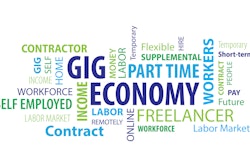
All business apps today are expressly tailored for the business executive.
With business apps, the focus is on the visual. It’s all about the navigation, the utility of every link, button, and dropdown menu, and the content and images that support the experience. No pixel is left unturned.
You’re a business owner. You run an enterprise with a lot of moving parts and the cloud now permits you to jump right in and get a current view of your business at every level. What comes with any business app solution is the ability to review real-time metrics, and to call up at a moment’s notice the critical data that courses through the specific silo or function that app is engaged for.
When talking about business apps it is usually software as a service or SaaS models on the cloud, including bank and vendor software tools.
“I personally have 25 different pieces of software that I run my business on and that includes, Shopify, Square, BlueCross BlueShield for our insurance portal,” says Bill Furlong, founder, and CEO of SquareStack.
However, by embracing the cloud and moving more of your technology needs and traditional messy, time-consuming work into GreenApps, you’ll recover the valuable time necessary for the strategic side of your business. The magic of an AppStack, such as GreenApps, as opposed to a half dozen human managers is that you get reports in real time with the click of your mouse or a tap of your fingers. This time savings alone gives you space to do new things like learn more about your business in a searchable, analyzed manner.
“Most SaaS tools are anywhere from $10 to $100 a month based on volume, frequency of use, but 5 to 10 years ago, that same software suite probably would have cost thousands of dollars a month,” Furlong says. “The whole revolution of the cloud, input of investment and innovation have made these software tools more accessible and easier to use, but when you have six or more, it gets a little unwieldy.”
A recent survey suggests that small landscape companies spend approximately $200 per month on software.
“Users of all software are fully engaged by the software maker to understand what works and what doesn’t work. We’re continue to say what GreenApps as a gateway is, by spending $10 more a month, you are just making that $200 you probably already spent, work that much harder,” he says. “I can guarantee you these small business owners are going to be adding more tools to their toolbox.
And just like you, the mid-sized to large company CEO has neither the time nor the desire to dive too deep into the entire enterprise’s data reports. What they want is a “global” view of the company’s most important business metrics.
In May 2018, AT&T surveyed a group of small business owners and discovered the following::
- 75% of small businesses are eager to embrace new technology, 30% find it hard to adopt.
- Over 34% would like to learn more about how to use this new technology.
Furlong says of those 30% finding it hard to adopt, nearly 90% of them operate some sort of software or app with their bank or equipment vendors.
“I would say, take a few weeks out and really dive into those tools and understand what value they can bring to you. There’s probably a ton of things in there that they’re probably not using,” he says. “If they need any sort of convincing that you should use what you have, give yourself a test run on understanding some of the reports and easy to turn on alerts, that will make you a better business owner out of the box.”
Building your AppStack is essential. You should understand how critical user experience, real-time metrics, and embracing your vendor network are. You should have a sense of what you need to know and the commitment you need to make to fully embrace the cloud.
Furlong offers a few steps to take in embracing technology:
- Pick one of your existing business apps, Either on your own or with the assistance of the vendor’s customer service team, request a full capabilities presentation or “refresh” review. Ask for specific details on the analytics available in the app, and how to be sure you’re utilizing them properly and to their fullest capacity.
- Visit your bank and request a review of all the online tools that can be deployed for a small business. They may send you online, so make sure you follow up. Be sure they present all the best practices and recommendations for their business customers.
- If you’re not on some kind of accounting software, that’s your first investment. No business that plans to be around a long time won’t be on an accounting software.
“It’s critical that you understand a bit about our collective (and individual) economic power, and as such, why we need to invest at our own business level in technology,” Furlong says. “If any of the early signals hold true, it’s through technology that as small business owners we will continue to lead economic growth, employ and hire more workers, and compete successfully with mid-market and agile Fortune 500 companies.”




















